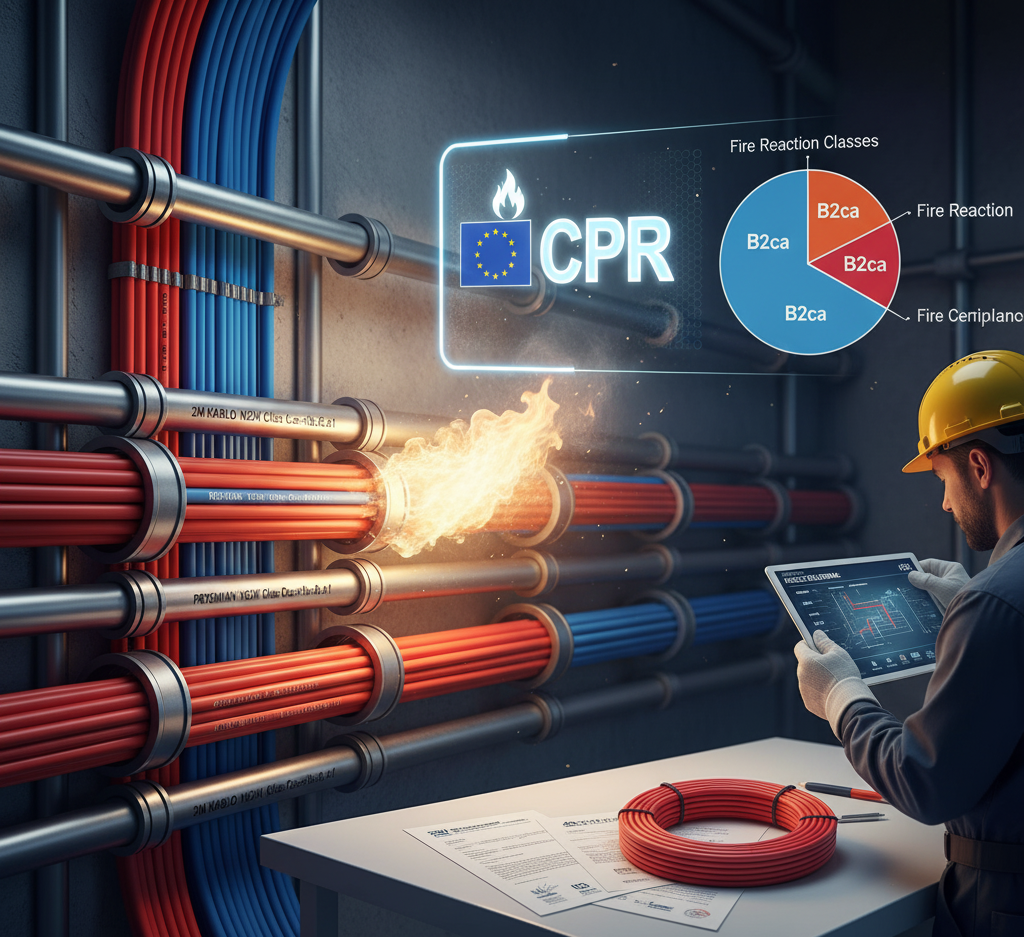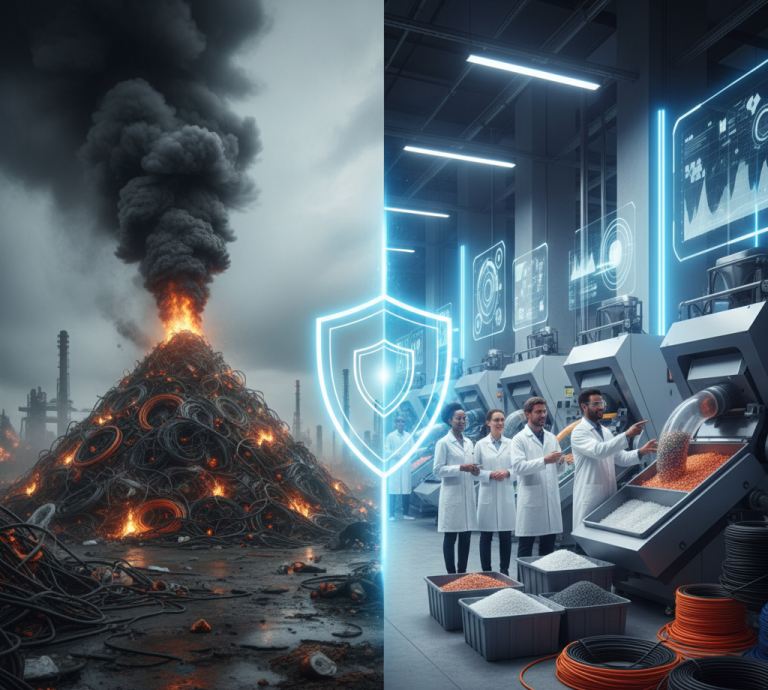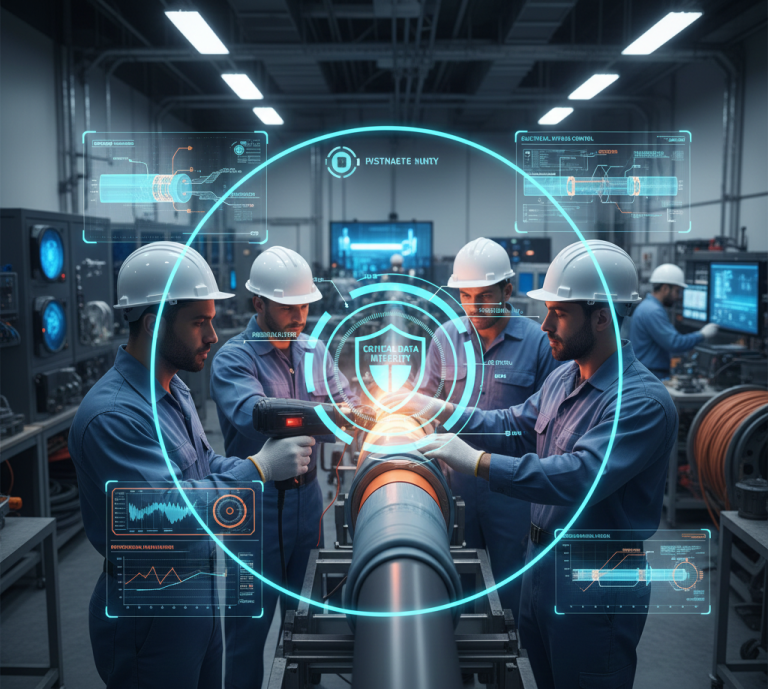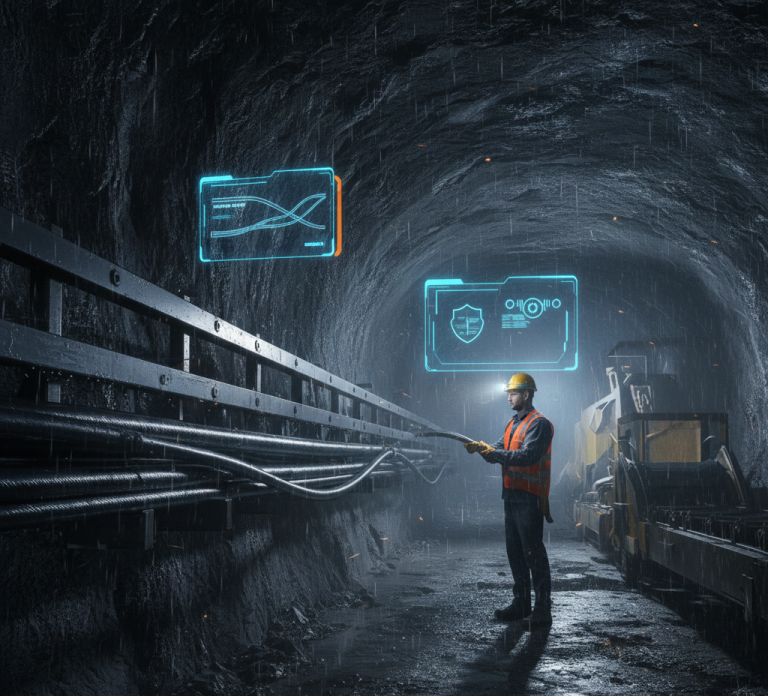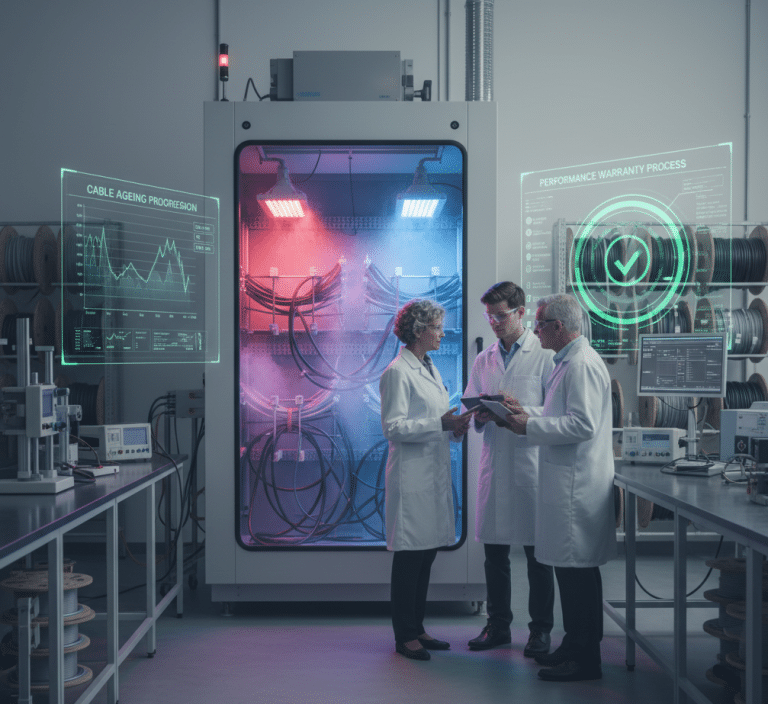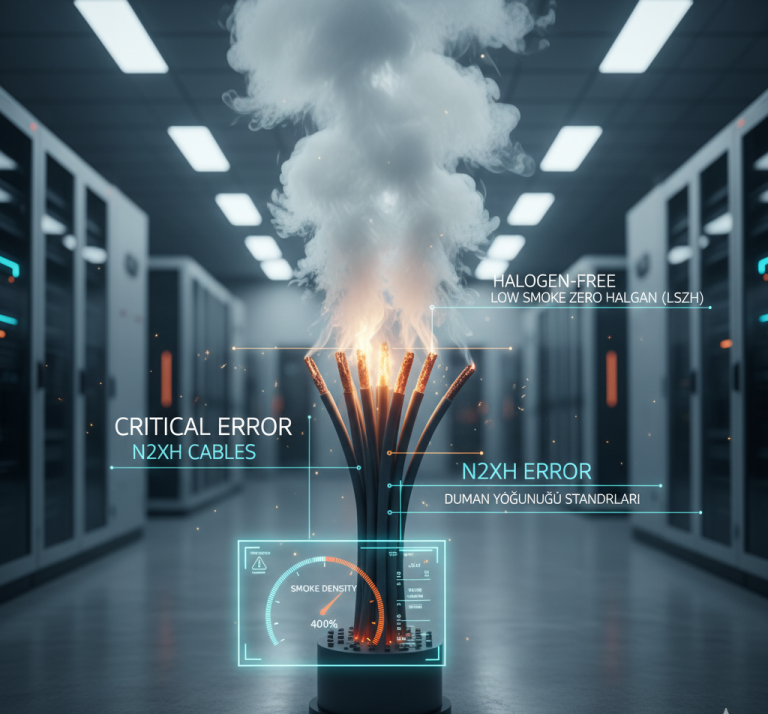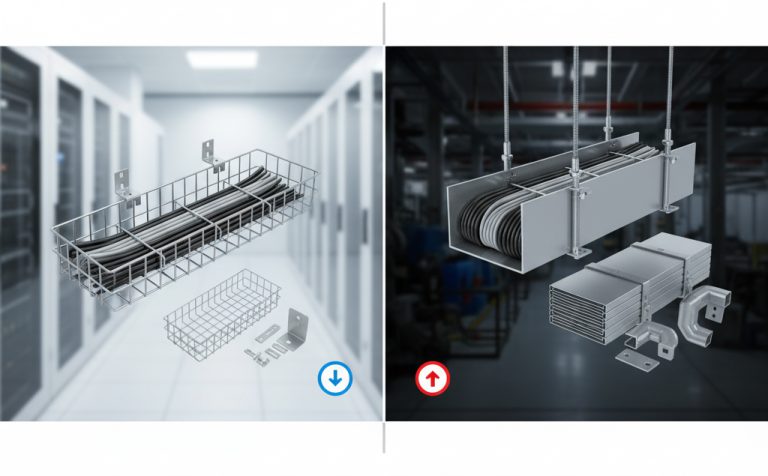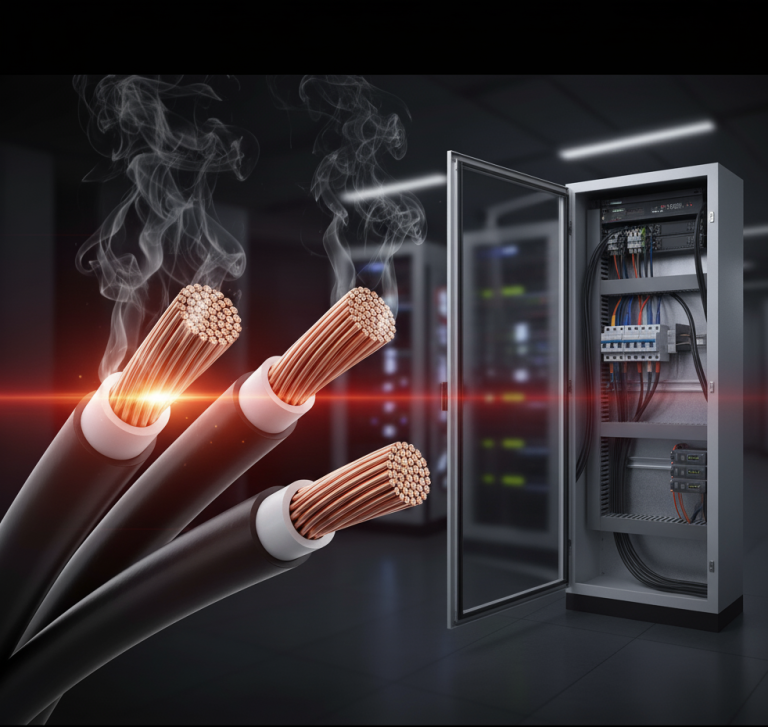The CPR Regulation and Cable Selection is one of the most crucial topics redefining safety standards for construction projects. The Construction Products Regulation (CPR) aims to maximize the safety of life and property by standardizing the performance of cables used in buildings and infrastructure works in the event of a fire. This legal requirement has completely changed the cable selection process, prioritizing only brands that offer reliable, certified products. In this context, industry giants like Prysmian and 2M Kablo have become the guarantee for projects with their fully compliant solutions.
In this comprehensive guide, we will examine all the details of the CPR Regulation and Cable Selection, explain the fire reaction classes of cables, and look closely at the compatible Prysmian and 2M Kablo products that we offer at Deltatema.
What is the CPR Regulation and Why is it Vitally Important?
The CPR Regulation is a mandatory standard introduced by the European Union in 2017 and is also enforced in Turkey. The main objective of this regulation is to classify the behavior of construction products (including the cable itself) when a fire occurs. Since the behavior of the cable used in a building during a fire directly affects the speed of fire spread, smoke density, and toxic gas emission, the CPR is of critical importance for life safety.
The CPR mandates that manufacturers have their products tested by independent bodies and clearly label the cable with its fire performance class (Euroclass). This allows project managers and installers to consciously select the appropriate cable for the building’s intended use and safety level. This compliance is not only a legal requirement but also a fundamental assurance that demonstrates the quality and responsibility of your project.
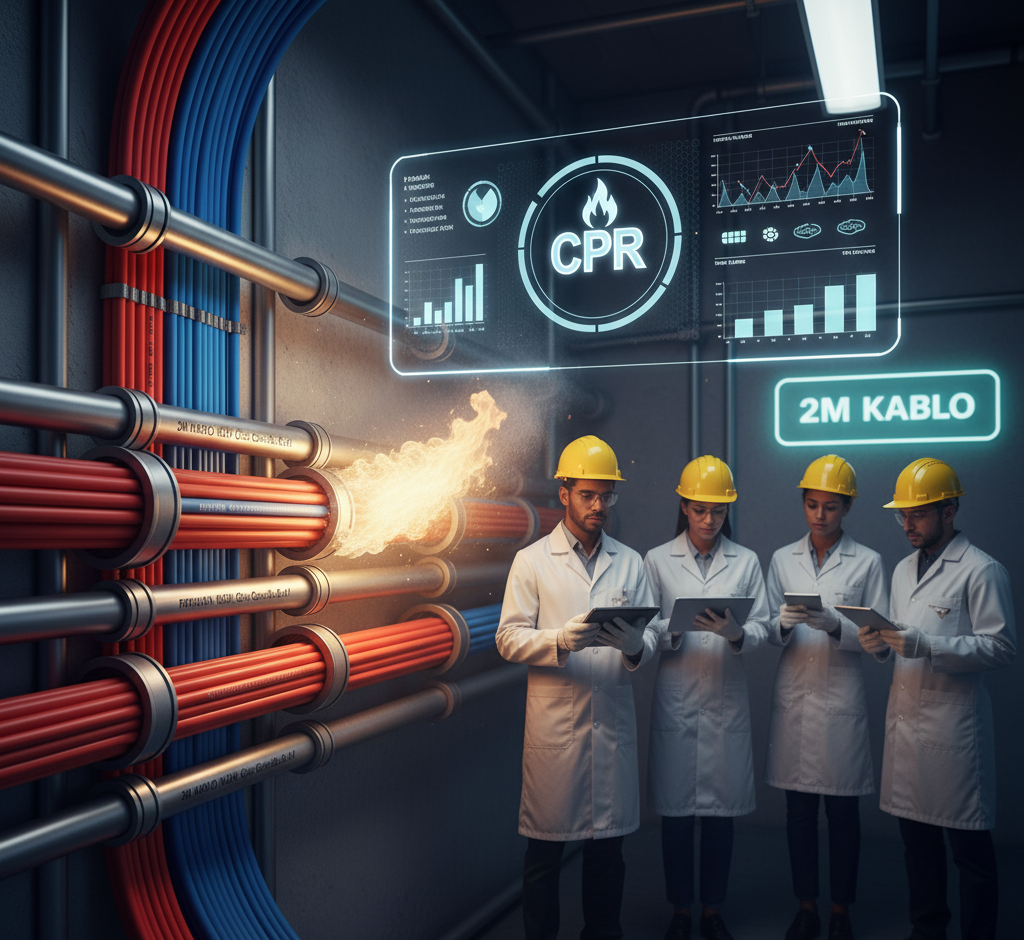
CPR Classes of Cables and Fire Reaction
The CPR classifies cables according to their behavior against fire on a spectrum ranging from Aca to Fca. These classes indicate how much the cable slows the flame, how much heat it radiates, and how much smoke/toxic gas it emits.
- Aca: Non-combustible (The highest possible safety level).
- B1ca, B2ca: Cables with very high fire resistance, which largely prevent the spread of flame. (Generally mandatory in critical and high-rise buildings).
- Cca: Fire-resistant cables, allowing limited flame spread. (Commonly preferred for places with high human density like hospitals and schools).
- Dca: Cables with flame-retardant properties, but with less performance than classes B and C.
- Eca: The lowest class with standard flame-retardant properties.
- Fca: Cables that do not meet the specified performance.
Selecting the correct class in a project is the most important step in the CPR Regulation and Cable Selection process.
Compliant CPR Solutions from Prysmian and 2M Kablo
Prysmian and 2M Kablo lead the industry by making a large part of their product portfolios compliant with CPR standards. Both brands offer a wide range of products in high-security classes, such as B2ca and Cca, required by projects.
Prysmian’s CPR Certified Products
The global cable giant Prysmian utilizes its R&D power to produce cables that comply with the most demanding requirements of the CPR.
- B2ca and Cca Class Power and Control Cables: Prysmian is preferred in critical infrastructure projects, especially with cables that have the strictest smoke and heat classes like B2ca. These cables ensure minimum smoke density and acidity in the event of a fire.
- Example Product: CPR-compliant versions of Prysmian’s YSLYcy-JZ series offer Cca class safety in control and signaling applications.
2M Kablo’s Fire Safety Approach
Representing the strength of domestic production, 2M Kablo is assertive in CPR compliance with its halogen-free and low-smoke emission cables. 2M Kablo‘s focus is particularly on fully complying with local market building regulations.
- NHXMH (Cca and Dca Class): CPR-compliant versions of the NHXMH series, one of the most widely used halogen-free cables in the internal installations of residential and commercial buildings, are a fundamental solution for projects with high fire safety awareness.
- Example Product: CPR-class versions of 2M Kablo’s N2XH cables offer additional features for maintaining functional integrity.
The Deltatema Difference in CPR Regulation and Cable Selection in Your Project
The CPR Regulation and Cable Selection requires technical knowledge and experience to find the right product. At Deltatema, we not only supply the products of Prysmian and 2M Kablo but also provide consulting services to help you select the most suitable CPR class for your project’s architecture and safety requirements. Regardless of whether your project is a shopping center, hospital, school, or residence, by using the correct CPR class cable, you both meet legal obligations and optimize your budget.
The Importance of International Standards and Certification
The importance of certification in the CPR Regulation and Cable Selection process cannot be overstated. The cable’s CPR class label must be verified by an independent testing body. All Prysmian and 2M Kablo products in Deltatema’s portfolio have successfully passed the relevant tests.
For more information on CPR, you can review the relevant legislation page of the T.R. Ministry of Environment and Urbanization.
Conclusion
The CPR Regulation and Cable Selection is a necessity that can no longer be ignored. To secure the safety and future of your project, choosing certified solutions from proven brands like Prysmian and 2M Kablo is the smartest approach. At Deltatema, we are always by your side, serving you with the right cable selection guide.
